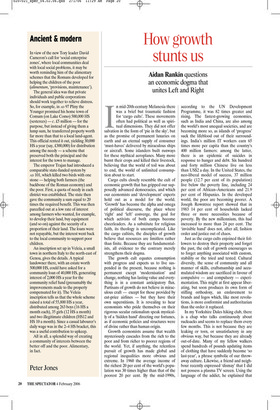Ancient & modern
In view of the new Tory leader David Cameron’s call for ‘social enterprise zones’, where local communities deal with local social problems, it may be worth reminding him of the alimentary schemes that the Romans developed for helping the children of the poor (alimentum, ‘provisions, maintenance’).
The general idea was that private individuals and public corporations should work together to relieve distress. So, for example, in AD 97 Pliny the Younger promised his home town of Comum (on Lake Como) 500,000 HS (sesterces) — c. £5 million — for the purpose, but instead of giving them a lump sum, he transferred property worth far more than that to a local land-agent. This official rented it out, yielding 30,000 HS a year (say, £300,000) for distribution among the needy — a scheme that preserved both the principal and the interest for the town to manage.
The emperor Trajan had introduced a comparable state-funded system by AD 101, which killed two birds with one stone — helping both farmers (the backbone of the Roman economy) and the poor. First, a quota of needy in each district was established. The state then gave the community a sum equal to 20 times the required benefit. This was then parcelled out at a low rate of interest among farmers who wanted, for example, to develop their land, buy equipment (and so on) against the security of a proportion of their land. The loans were not repayable, but the interest went back to the local community to support poor children.
An inscription set up in Veleia, a small town in northern Italy to the north-east of Genoa, gives the details. A typical landowner there, with an estate worth 500,000 HS, could have asked for a community loan of 40,000 HS, generating interest of 2,000 HS a year for the community relief fund (presumably the improvements made to the property compensated for it). The Veleia inscription tells us that the whole scheme raised a total of 55,800 HS a year, distributed among 263 boys (16 HS a month each), 35 girls (12 HS a month) and two illegitimate children (HS12 and HS 10 a month). Since a casual labourer’s daily wage was in the 2–4 HS bracket, this was a useful contribution to upkeep.
All in all, a splendid way of creating a community of interests between the better off and the poor. Alimentary, in fact.
Peter Jones





























































































































 Previous page
Previous page